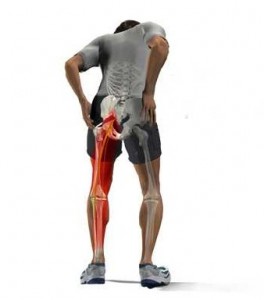 When I drive long distances (which I love to do) it is only a matter of time before my sciatic nerve becomes a pain in the butt. Yesterday marked the first leg of the last big drive of our summer. By hour seven, the dull throb in my butt that started at hour six, started creeping down my leg. I spent the last half hour of the drive on my left sit bone trying desperately to take my right inner thigh back and apart to create space for my piriformis and pelvis.
When I drive long distances (which I love to do) it is only a matter of time before my sciatic nerve becomes a pain in the butt. Yesterday marked the first leg of the last big drive of our summer. By hour seven, the dull throb in my butt that started at hour six, started creeping down my leg. I spent the last half hour of the drive on my left sit bone trying desperately to take my right inner thigh back and apart to create space for my piriformis and pelvis.
The sciatic nerve forms directly behind the piriformis muscle. Five nerve roots emanate from the lower spine and travel down through the pelvis to meet up behind the piriformis muscle, one of only two muscles that connect the legs to the spine. These five nerve roots meet up behind the piriformis and join together into two nerves (peroneal and tibial) that are encased in a sheath forming what we refer to as the sciatic nerve. The two nerves will split again at the back of the knee but where they meet behind the piriformis creates one of the thickest nerves in the whole body, as big around as your index finger.
Large swaths of the world will never suffer from sciatic pain. It is just one of those things. But those of us who do know the feeling would like very much to never feel it again. I only have these issues when I drive but the fact that they manifest at some point on every long journey means that more trouble is lurking relatively close to the surface.
The antidote for sciatic pain is good posture and proper muscle tone. But even then, if you tend towards looseness in your joints, nerve issues are always a possibility.
Driving long distances requires a decent amount of core tone. As an aside, people don’t realize how strong someone needs to be to be a racecar driver. You need a rock solid core to maintain insane speeds and retain control. Driving long distances is a microcosm of this effort. You might not need to work hard to steer straight but you will definitely need a lot of core strength if you want to sit up straight for however many hours you are driving.
We are talking about resting tone because you don’t really want to be making muscles for eight hours if that’s how long you are driving. The resting tone of our muscles is key to our ability to age well over the long-term and drive well, work at our computers, and even sleep, over the short-term.
Without decent resting tone the spine will not be able to maintain its extension and the pelvis will eventually fall backwards into a tucked position. This is invariably when the trouble in the pelvis and sciatic nerve will begin.
The sciatic nerve can be a pain in the butt, but any efforts we make to improve our posture and the tone of our core muscles will help to keep nerve troubles away.
